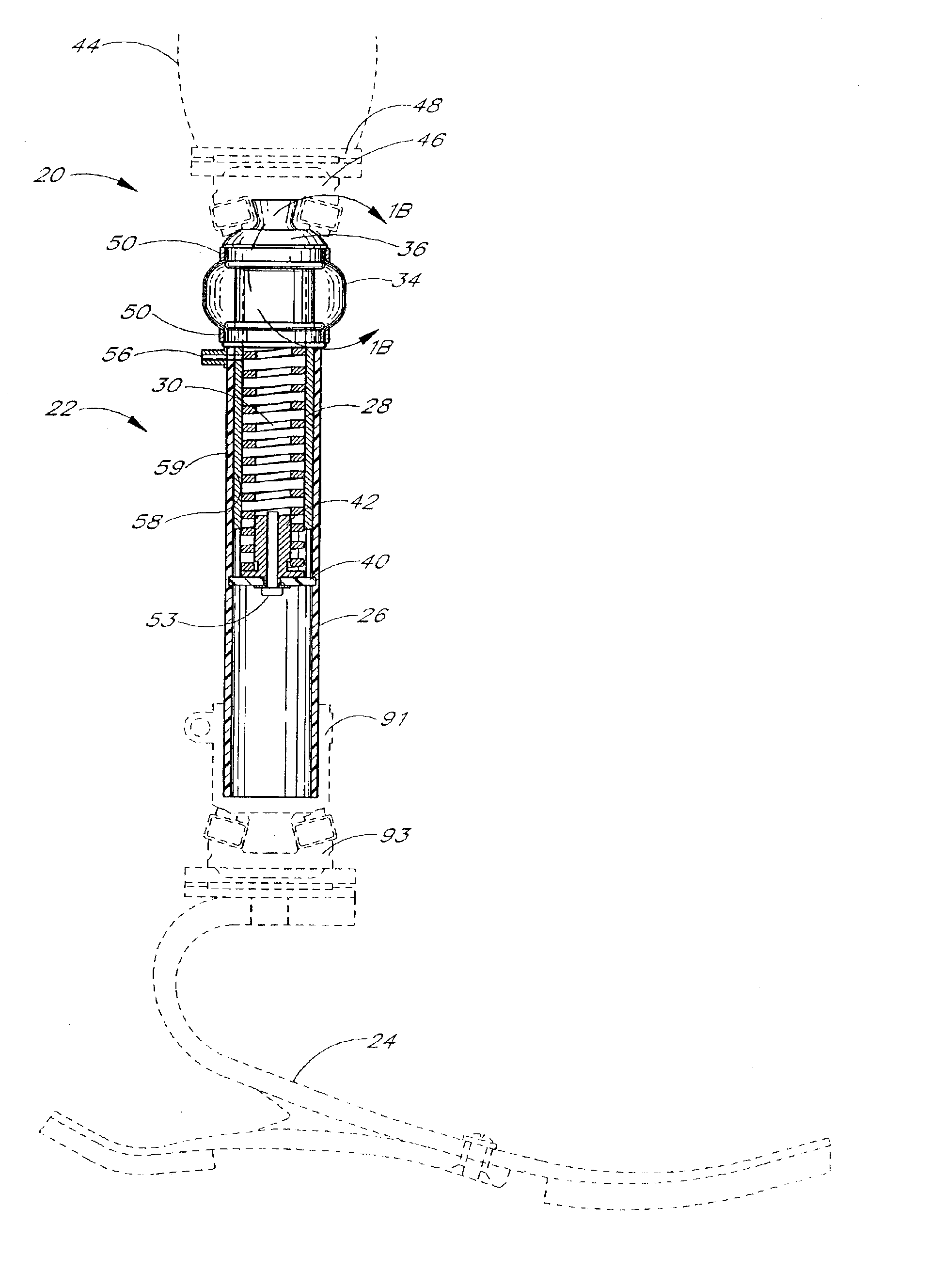Active shock module prosthesis
a technology of shock module and prosthesis, which is applied in the direction of prosthesis, torsion spring, wound spring, etc., can solve the problems of unrestrained compliance, several limitations, and uneven relative motion of the shock module, so as to provide the resistance to relative rotation and smooth response to loading and unloading
- Summary
- Abstract
- Description
- Claims
- Application Information
AI Technical Summary
Benefits of technology
Problems solved by technology
Method used
Image
Examples
Embodiment Construction
[0092]FIG. 1A shows a preferred embodiment of a lower limb prosthesis 20 including a shock module 22 constructed and assembled in accordance with the teachings of the present invention. For purposes of illustration, the prosthesis 20 is shown as also including a prosthetic foot 24, in this case a Flex-Walk® foot available from Flex-Foot, Inc. of Aliso Viejo, Calif., and a stump socket 44. In particular, the upper end of shock module 22 is connected to stump socket 44, illustrated by way of example by utilizing a female pyramid fitting 46 and an alignment cup 48.
[0093]Shock module 22 includes telescoping hollow cylindrical pylons 26 and 28, shaped and adapted for smooth relative motion. Pylons 26 and 28 are preferably slidingly and rotationally interengaged with each other while retaining their operative horizontal alignment with each other through a relatively close fit between the inside dimensions of outer pylon 26 and the outside dimensions of inner pylon 28. Inner pylon 28 is ad...
PUM
| Property | Measurement | Unit |
|---|---|---|
| Length | aaaaa | aaaaa |
| Displacement | aaaaa | aaaaa |
| Electrical resistance | aaaaa | aaaaa |
Abstract
Description
Claims
Application Information
 Login to View More
Login to View More - R&D
- Intellectual Property
- Life Sciences
- Materials
- Tech Scout
- Unparalleled Data Quality
- Higher Quality Content
- 60% Fewer Hallucinations
Browse by: Latest US Patents, China's latest patents, Technical Efficacy Thesaurus, Application Domain, Technology Topic, Popular Technical Reports.
© 2025 PatSnap. All rights reserved.Legal|Privacy policy|Modern Slavery Act Transparency Statement|Sitemap|About US| Contact US: help@patsnap.com



